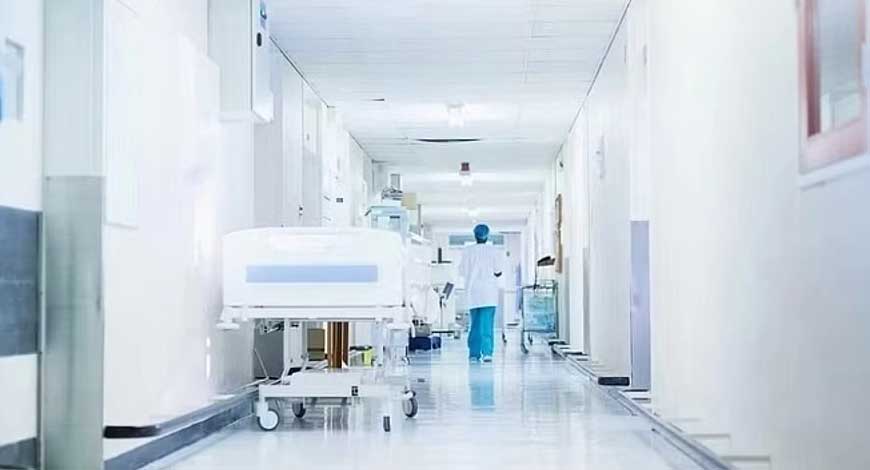Headlines of The Day
How SC rate standardization order has put hospitals in trouble

Indian hospitals are having a great year so far.
In the first 9 months of FY24 (April 2023 to March 2024), major Indian hospital chains including Apollo Hospitals and Fortis Healthcare made an average revenue of ₹50,000 per bed per day.
That’s close to 10% more than last year’s (FY23) average for the same period.
But wait… this growth could soon be jinxed!
That’s because the Supreme Court wants the government to introduce price controls across hospitals in India. Yup, it wants all hospitals to list their predetermined price bands for medical treatments and this will ensure uniformity all over the country.
But why on earth are they issuing such a diktat, you ask?
Well, let’s take it from the top.
A few years ago, an NGO called Veterans Forum for Transparency in Public Life filed a Public Interest Litigation (PIL) in the Supreme Court. Their complaint was simple — the government wasn’t taking a decade-old law seriously.
See, in 2010, the government had formulated something called the Clinical Establishment Act that had three main objectives.
Firstly, it would help crack down on dubious healthcare clinics. Fake branches of medicine were on the rise at the time. They disguised their original identities to illegally practise allopathy while deceiving patients and playing with public health. So, the law prescribed that all clinical establishments be registered under it.
Secondly, it also intended to regulate the country’s clinical establishments by prescribing minimum standards of services that they provided. Simply put, it wanted to improve the quality of healthcare everywhere.
Thirdly, and this is the most relevant bit to our story today, it wanted to tackle rising medical inflation.
If you go back to 2009, you’ll see that India required around 2.5 million heart surgeries a year. But even all the heart hospitals put together performed only about 80,000 surgeries. Sure, you could say that we didn’t have enough facilities to conduct those many surgeries, but, the bigger issue was the unaffordability factor. Most Indians simply didn’t have the means to pay for the sky-high surgery costs.
So to solve that problem, the Clinical Establishments Act made it mandatory for the government to work in tandem with state governments and notify standard rates for medical procedures across hospitals in India.
But the problem was that despite being etched in law, the Act only continued to remain on paper for years. The government wasn’t in a hurry to implement it simply because setting standard rates or even rate ranges for medical procedures could be hard. Not all hospitals and clinical establishments would be okay with charging uniform rates across the country simply because it would hurt their profit margins. So to avoid the backlash, the government only kept pushing this task to its pending pile of papers.
And it remained on this ‘to-do’ list for close to 14 years.
Until this week when the Supreme Court pulled up the government for its lackadaisical approach to an important law like that. It sort of said “There’s a glaring difference between the treatment costs between government and private hospitals. So why haven’t you specified the rate ranges as per the law yet?”
It has probably seen that costs for medical treatment have doubled in the past 5 years. And it has seen even the insurance industry complain about hospitals inflating rates. So it has warned that it won’t hesitate to enforce a drastic measure — get all private hospitals to run with the same rates specified in the Central Government Health Scheme (CGHS). These are lower rates that cover the medical costs of Central Government employees and their dependent family members.
And that move could set the cat among the pigeons.
Because CGHS rates simply won’t be profitable for hospitals. According to the financial services company Macquarie, CGHS rates are 40-50% lower than those charged by private hospitals. And as of now a bunch of private hospitals listed on the stock exchanges have an operating profit margin of a little over 20%. So you can see the kind of damage that this could unleash on the sector. And it’s no wonder the hospitals are describing this as catastrophic and calling it an armageddon.
So does that mean that the private healthcare industry is doomed now?
Well, that does seem quite unlikely, no?
Because when the Court says it will impose CGHS rates as default, it’s likely a temporary measure. It wants the government to come back with its own set of rates. And since state governments will be involved in the consultation, you’ll see that the rates will probably vary not just from state to state but even from city to city within a state. You can’t expect hospitals in Bengaluru to be priced the same as a hospital in Mysuru, right?
Also, even within the clinical setup, a top-of-the-line hospital with the most experienced doctors and the latest in operation technology will face higher costs than a smaller clinic. So they’ll have to charge higher for their medical procedures to recoup those costs. You’d expect the Courts to consider that. So you could still end up with a wide range of rates that reflect that too.
So yeah, with the private healthcare industry already voicing their concerns and lobbying against such a move, we’ll just have to wait and see how this healthcare story plays out. Finshots












